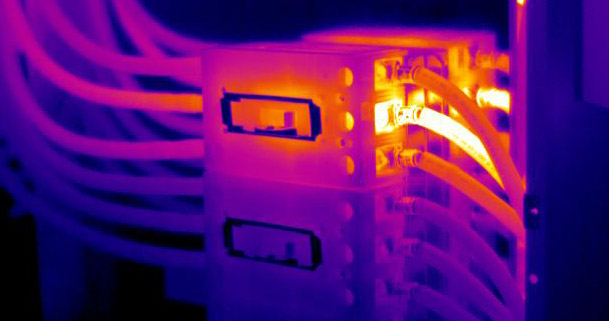Infrared Electrical Scan
Whether it’s high rise office buildings, hospitals, or an industrial facility, the approaches to accomplishing an infrared electrical scan or Thermal Image can vary as much as the locations. One universal thread throughout these inspections is the manner in which most electrical maintenance folks expose panels for inspection. Most industrial grade panels have a two part cover but these configurations can, and do, vary from one manufacturer to another. We commonly see an outer cover that has the enclosure door built in and held in place by a number of fasteners. Once this outer cover is removed, many panels have what’s called a deadfront. A deadfront usually describes the inner most layer of covering internal to an electrical apparatus that covers the energized circuit parts. However, the electrical industry has sort of unofficially come to call what is essentially an inner panel cover, or bus cover, a deadfront. This cover is usually the piece of sheet metal that has slots cut in it allow for the faces of the individual circuit breakers to show. Removing the outer cover will reveal the breaker wire-to-lug connection points for each circuit. So, if you have a wire-to-lug anomaly, you’d be able to view it only with the outer cover removed. If you leave the deadfront in place, what is not visible is the bus-to-breaker connection point, where power is distributed from the panel’s internal bus work to the individual circuit breakers. Often, high resistance will develop in the termination points where each circuit is initially installed, the wire-to-lug junction. However, any connection point in the circuit is a potentially failure point, including the breaker-to-bus connection. Take the extra step, and removed that deadfront. It only takes a few additional minutes but can add [...]

